IPS Connection Diagram:
This diagram shows how to make an IPS connection. In this circuit, we use an electric IPS, a 12v DC battery, some gang switches, some power sockets, some lights, three fans, a single phase energy meter, a DP MCB ( Double Pole Miniature Circuit Breaker ), an RCCB ( Residual Current Circuit Breaker ), some SP MCB ( Single Pole Miniature Circuit Breaker ), and some 3-pin plug.
Advertisements
Components needed For this Project:
You can get the components from any of the sites below:
- Single Phase Energy Meter [See Buy Click Amazon]
- DP MCB 32A [See Buy Click Amazon]
- SP RCCB 32A [See Buy Click Amazon]
- SP MCB 10A [See Buy Click Amazon]
- 12V Battery[See Buy Click Amazon]
- IPS System 3KW [See Buy Click Amazon]
- Gang Socket [See Buy Click Amazon]
- Gang Switch [See Buy Click Amazon]
- Gang Dimmer [See Buy Click Amazon]
- Ceiling Fan 56-Inch [See Buy Click Amazon]
- CFL Light [See Buy Click Amazon]
*Please note: These are affiliate links. I may make a commission if you buy the components through these links. I would appreciate your support in this way!
Advertisements
Components used to make the IPS Connection Diagram:
A Single-Phase Energy Meter is a sort of Watt-Hour meter. It consists of two Electromagnets. Single-Phase Energy Meter is also Popularly known as a watt-hour meter. 1 Magnet is called the shunt magnet Ml which is Mounted with a Pressure coil. The Pressure coil is a long coil Made of fine Copper wire that is connected across the Supply single-phase line. Single-phase energy meters are suitable for measuring single-phase AC current flow frequencies of 50/60 Hz, which are used for fixed indoor installation systems.
02. DP MCB:
DP MCB In 2 Pole MCB, switching & protection is affected in phases and the neutral. A Double Pole or DP Switch is a Switch that Controls 2 Circuits at the same time. In terms of Residential Switching, this Normally means it Switches the live and Neutral at the same time. In Layperson Terms, Double Pole switches or DP Switches are Exclusively Designed to Control 2 Different Electrical Circuits at the same time, which allows the Appliances to Isolate safely and reliably. Fan or light Combinations and Medical Equipment are some of the many applications for DP Electrical Switches and Electrical components.
The Residual Current Circuit breaker RCCB is the Safest device to detect and Trip against Electrical Leakage current. This ensures protection against Electric shock Caused by indirect contact. Circuit breakers (CB) are automatically Operated Electrical Switches that Protect Electrical Circuits from Short-Circuiting or Overloading systems. It Protects against many major accidents. RCCB Circuit Breaker is an Electrical Wiring device whose function is to disconnect the current in the circuit.
04. SP MCB:
In single-pole MCB, Switching and protection are Affected in only one Phase. Single phase supply to break the phase only. A single Pole breaker is Typically used with 120-volt Circuits, and a 6-20 amps Miniature Circuit Breaker. They are constructed with one Line Wire and one Neutral wire. A Single Pole switch is the most basic General-Purpose switch that you use to Control a light or another device from one location. These Switches have 2 Brass-Colored screw Terminals Connected to the hot Power source wires. Pole refers to the number of Circuits Controlled by the Switch SP Switches Control only one Switch Electrical Circuit.
A 12V Battery is Available As a Non-Rechargeable Alkaline Battery Or In Rechargeable Forms. This Battery is Often Used in Various Outdoor Applications that Require Greater Amounts of Energy in Order to Operate as Desired. 12V Battery is a Name Given to a Unique Style of Battery, but its Voltage is More Than 12 Volts. In Such Cases Where a 12V Portable Battery is Used to Replace an onboard 12-volt Battery, It Is Usually Lighter Than a Standard Version. This is Because It is more likely to be Transported Between Uses and Consumers Will Not Choose to Carry a Large, Bulky Battery. A Portable 12V Battery is Usually Sealed in a case so That it is Waterproof.
06. IPS:
Both UPS (Uninterrupted Power Supply) and IPS (Instant Power Supply) supply power when the main power (AC 220V ) line fails. but UPS switches the connection without a power drop in a fraction of a second. while IPS requires a minimum of 1 second or more to switch the system. Both the IPS and UPS type systems employ Direct Current (DC) to Alternating Current (AC) inverters to provide AC power of proper frequency (50-60HZ) and voltage and also a charging system to maintain internal DC batteries at full charge auto cut for battery. IPS and UPS operation is primarily distinguished in the operation of the inverter.
A Power Socket is a Device to Which Electrical Devices Can Be Connected to Receive the Electric Current Required For Their Operation. Connected by a System of Cables to a Power Source, Usually, an Electricity Generation Facility operated by an energy Production company, generally has no moving parts. Instead, it contains metal strips that make contact with the prongs of an Electric plug inserted into the socket. It is Through these Contacts That the Electric current is Transmitted. Electrical Devices that connect to a Power Source Through a Power Socket are Considered to be Portable Because they can easily be Connected and Disconnected From the Power Source.
08. Switch:
An SPST (Single Pole Single Throw) Switch is a Switch That only Has a Single Input and can Connect Only to one Output. This means it Only Has one Input Terminal and Only 1 Output Terminal. A Switch is a Mechanical or Controlling Device That Changes the Flow of Current Direction or Interrupts the Flow of Current Within a Circuit diagram. An electrical line using Single Pole Single Throws (SPST) is Perfect for on-off switching. When the SPST is closed, the Circuit is Closed and the light from the lamp switches on the system. When The Single Pole Single Throw (SPST) is then opened, the light from the lamp goes out and the Circuit is off.
A Fan Speed Controller Controls The Voltage Across the Fan and Therefore Indirectly Controls its speed 220v AC line. A ceiling Fan Speed Regulator Actually Measures and Regulates the Speed of the Fan Using its Tachometer. Fan Speed is Controlled with Thyristor or Transformer Speed Controllers for Ceiling fans, and table fans. the fan is Controlled by a Capacitor, and the Voltage across the fan Determines the fan speed. A Speed Control loop Can be Implemented That is Independent of Manufacturing Variances and Wear on The Fan control system.
10. Ceiling Fan:
A Ceiling Fan is a fan Mounted on the Ceiling of a Room or space, Usually, Electrically Powered, That Uses hub-mounted Rotating Blades to Circulate air flow. They cool people effectively by increasing speed. It Doesn not Cool the Air Temperature — we Feel Cooler Because the Fan Moves the Air Around Us, a Process Called Evaporative Cooling. Evaporative Cooling Works like this: A cold day will feel Even Cooler if There is a Breeze Because of the wind Chill Factor.
CFL stands for Compact Fluorescent Lamp which is an improved version of tube lights of earlier days. Like tube lights, it is a vacuum glass tube with fluorescent powder coating which is not as long and straight as tube lights but curved/twisted compact, or small in size. Like a tube light, it has electrodes or filaments at both ends. But in this case, instead of a choke, there is an electronic circuit that drives the Compact Fluorescent Lamp. Because the red wave is less in the light of the Tubelight and Compact Fluorescent Lamp, the object looks a little pale or the correct color of the object does not appear.
Thank You for visiting the website. Keep visiting for more Updates.
Frequently asked questions
The basic circuit diagram includes an oscillator, a control circuit, a drive circuit for the power devices, switching devices, and a transformer. The conversion of DC to alternating voltage is achieved by converting energy stored in the DC source such as the power supply battery, or from a rectifier output, into an alternating voltage.
Both UPS (Uninterrupted Power Supply) and IPS (Instant Power Supply) supply power when the main power line fails, but UPS switches the project system connection without a power supply drop in a fraction of a second, the circuit diagram while IPS requires a minimum of 1 second or more to switch.
The inverter system converts the DC and voltage from a battery to AC and voltage. The output is a pure sine wave, as with the voltage and frequency of the power supply standard grid (50Hz, 230V). A pulse width modulated (PWM) switching scheme together with a full bridge converter and filter is used to realize this design.
Battery and voltage (12 V or 24 V) are decided by the current inverter so you do not have much choice but you can choose Ampere Hour capacity (AH) depending on how much backup time you want. For example, one 12 V inverter with a 100 Ah battery may give a 2-hour backup for a certain load.
A 1 kVA inverter is an electrical device that converts direct current (DC) power into alternating current (AC) power. It. Telecom Engineer. 1st love remains Electrical Engineering.
Read more Single Phase Wiring
What is a kilowatt-hour (kWh) | kwh formula | What does kwh mean
Introduction to Electrical Units and CircuitskW and kWh on your electricity bill As your home uses electricity during...
What is the Difference Between kVA | What does KVA mean | kVA formula
Difference Between KVA ExplainedWhat does KVA Mean? There are technical terms aplenty when it comes to generators, and...
Power Factor | Power Unit | Energy | Electricity Unit
Power factor definition | Calculating Power FactorPower Factor Values In a purely resistive circuit, the power factor...



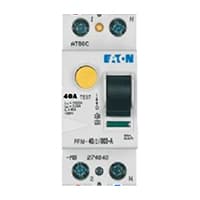
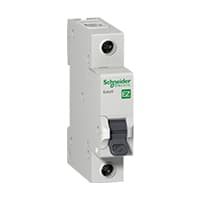

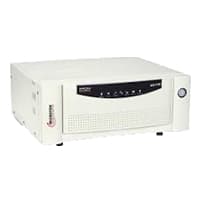
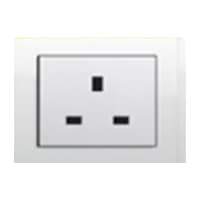
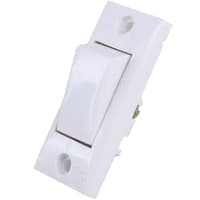
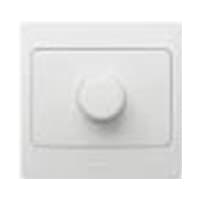


0 Comments